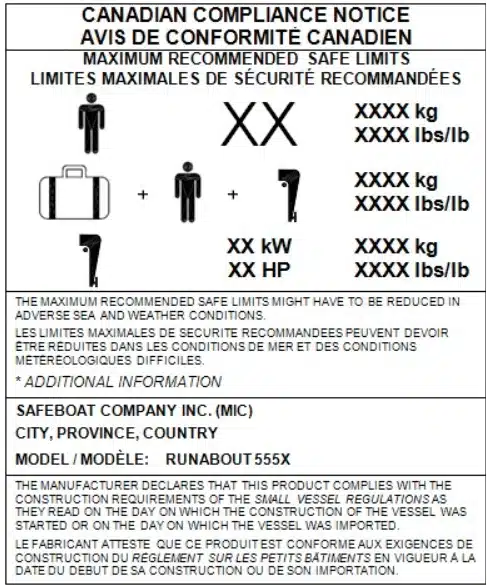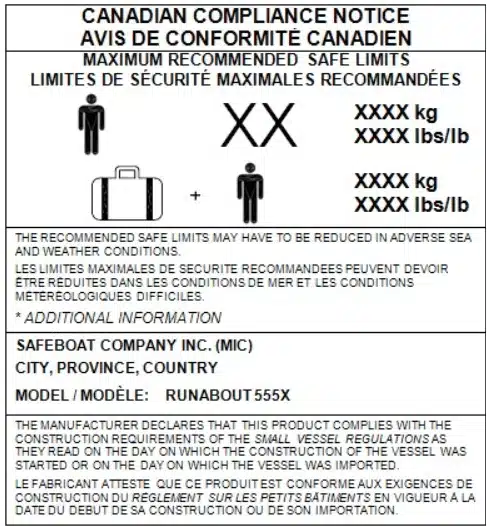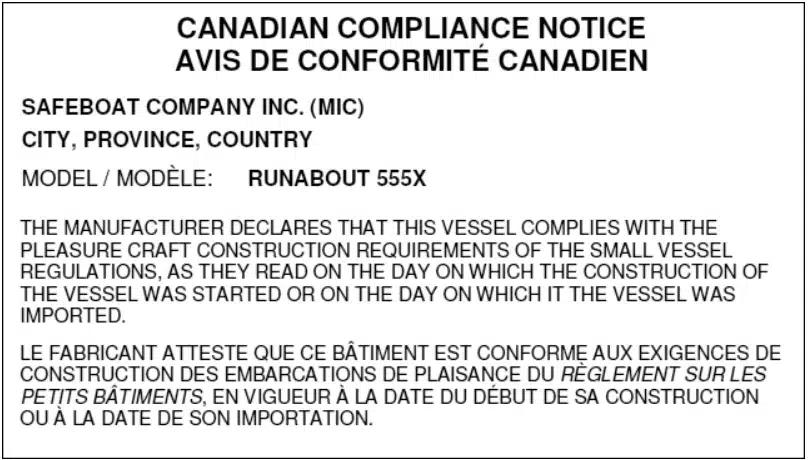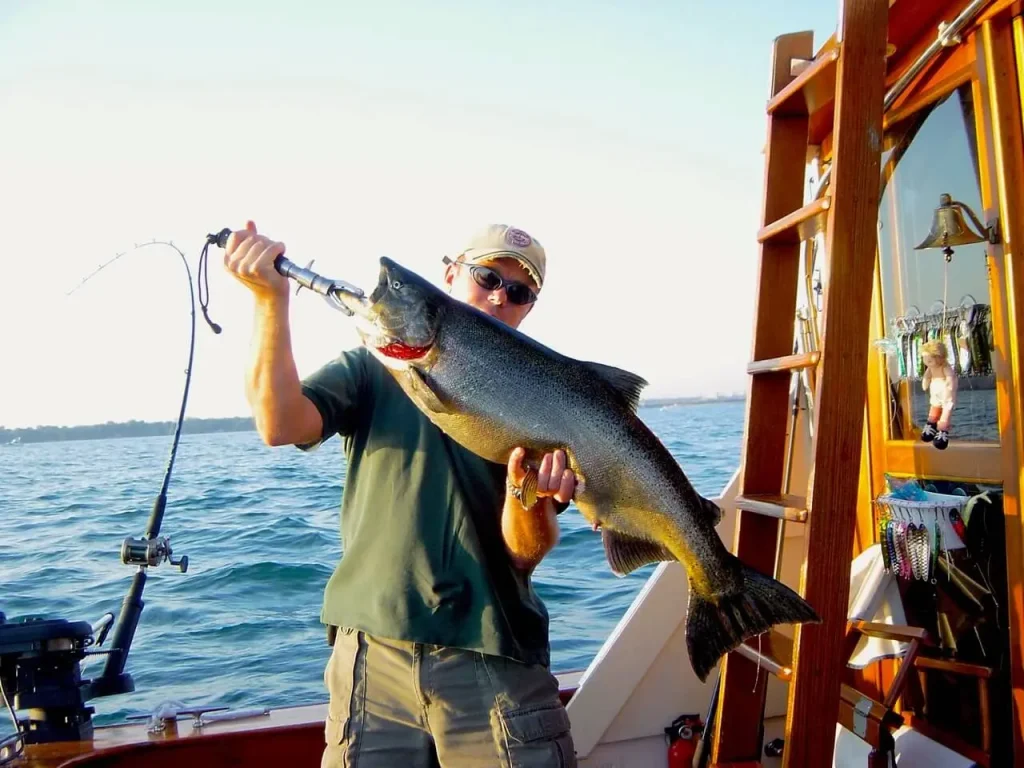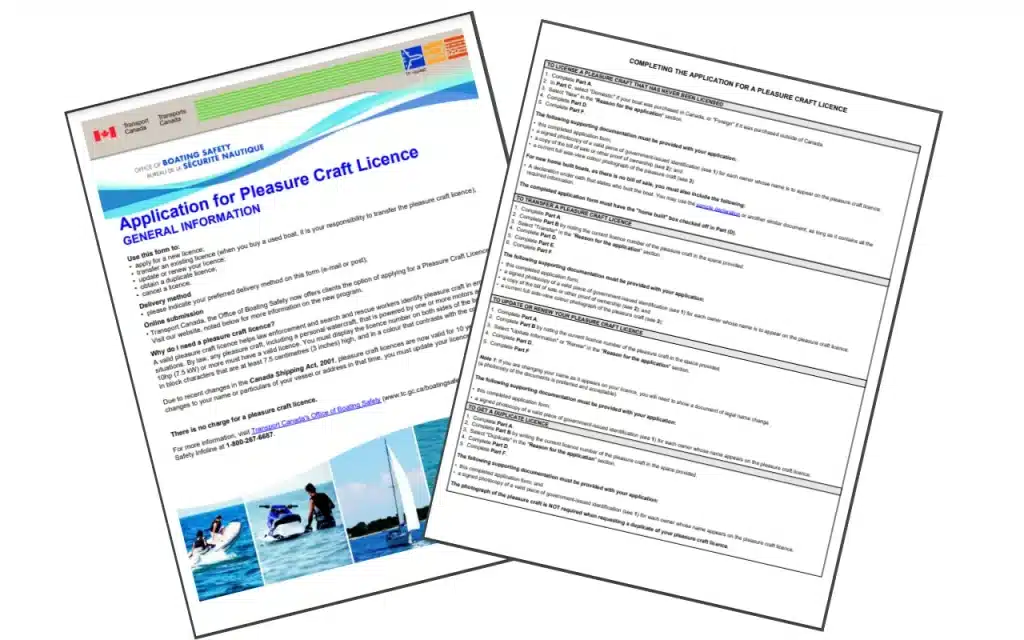Home / Boating Safety Manual / What is a Compliance Notice on a Boat?
10% OFF WITH CODE:
BLACKFRIDAY10
A compliance notice is a guarantee from the manufacturer or importer that a boat meets the construction requirements set out in the Canadian Small Vessel Regulations. Manufacturers and importers are responsible for attaching their own compliance notices, which should be based on the format and specifications provided by Transport Canada.
Key takeaways
- A compliance notice is a guarantee from the manufacturer or importer that a boat meets the construction requirements set out in the Canadian Small Vessel Regulations.
- It shows the maximum number of adults, recommended gross load capacity, and maximum engine power (horsepower), in addition to the Manufacturer’s Identification Code (MIC), model of the vessel, and Hull Identification Number (HIN).
- Operators are not allowed to remove or change a compliance notice. However, operators cannot be fined if the manufacturer/importer failed to attach one.
- They are also called capacity labels (when attached to recreational vessels less than 6 metres).
Table of contents
- Compliance notice requirements in Canada
- Exceptions
- Obtaining a compliance notice
- What information is displayed on a boat compliance notice?
- For Pleasure Craft Less than 6 Meters (19.7 feet) in length
- For Pleasure Craft More than 6 Meters (19.7 feet) in length
- General Information also found on Compliance Notices (regardless of size)
- Frequently Asked Questions
Compliance notice requirements in Canada
According to the Small Vessel Regulations, pleasure craft under 24 m that can be fitted with an engine must display a compliance notice in a location that is visible from the helm.
Pleasure craft operators cannot be fined if a manufacturer or importer fails to attach a compliance notice to their vessel, but removing or altering a compliance notice is prohibited, as is affixing one with incorrect information.
Exceptions
There are a few exceptions to the compliance notice requirement, including:
- Vessels built or imported by an individual for personal use
- Tugs
- High-powered vessels that are only used for racing.
Having a compliance notice from another country or organization is permitted, but it doesn’t replace the requirement for a Canadian compliance notice.
Obtaining a compliance notice
If a vessel was built after April 29, 2010 and is propelled by an engine but has no compliance notice, the operator should ask the manufacturer or importer to provide one.
What information is displayed on a boat compliance notice?
Compliance notices indicate compatibility with construction safety standards, maximum capacity and operational limits.
For Pleasure Craft Less than 6 Meters (19.7 feet) in length
This is the most common type of compliance notice for recreational boats and includes:
- Statement of compliance: A declaration that the vessel was built in accordance with the construction requirements of the Small Vessel Regulations at the time of construction or import.
- Maximum number of adults: The maximum number of adult persons that the boat can safely carry.
- Recommended gross load capacity: The maximum total weight the boat is designed to carry, including, persons, gear and equipment, supplies, fuel, motor assembly, steering controls. For boats less than 6 meters these recommendations (load, persons, horsepower) are based on safe operation in good weather conditions. Boaters must always be aware of limitations and never overload the boat, especially in challenging weather.
- Recommended Safe Limits of Engine Power (maximum engine power): If the vessel is designed to be fitted with an outboard engine, this will indicate the maximum permissible horsepower. This is often symbolized by an outboard engine icon.
Compliance notices for vessels under 6 m are also known as capacity labels.
For Pleasure Craft More than 6 Meters (19.7 feet) in length
For larger pleasure craft, the compliance notice primarily contains:
- Statement of compliance
- Model of the vessel
- Name of the builder, manufacturer, rebuilder, or importer and their manufacturer’s identification code.
- Design limitations (if any)
The notice must state that the vessel was built in conformity with either pleasure craft or non-pleasure craft construction requirements, whichever applies.
Non-pleasure craft compliance notices indicate whether the vessel can also be used as a pleasure craft. However, a pleasure craft over 6 m cannot be used as a non-pleasure craft unless it is modified to comply with the construction requirements of a non-pleasure craft.
(Images of sample compliance notices courtesy of Transport Canada)
General Information also found on Compliance Notices (regardless of size)
- Manufacturer’s Identification Code (MIC)
- Model of the vessel
- Hull Identification Number (HIN)
Get your boating licence with Drive A Boat Canada!
We offer a comprehensive online course leading to lifetime certification. Register with Drive a Boat Canada today, and learn everything you need to know to pass the boating exam. With your boating licence (PCOC), you can take to the water legally anywhere in the country.
Frequently Asked Questions
Removing or altering a notice is prohibited and subject to fines. Exceeding the limits outlined on the label – especially the gross load capacity – increases the risk of instability, swamping, and capsizing, which is extremely dangerous.
Yes. The limits listed on the compliance notice (capacity label) are for safe operation in good weather conditions. Operators are always responsible for reducing the load and speed in challenging or rough weather.
Vessels built or imported before April 29, 2010, may not have a required compliance notice. For older or homemade boats, Transport Canada previously used formulas (e.g., based on length and width) that can give a rough estimate, but the operator must ultimately use their best judgment and err on the side of caution.
No, the maximum engine power (horsepower) listed on the capacity label for vessels under 6 meters is the maximum permissible horsepower. Installing a motor that exceeds this limit is a violation of safety standards and makes the vessel unsafe and non-compliant with the regulations.
Sources
- Government of Canada (2010, July 6) Compliance notices for pleasure and non-pleasure craft. Transport Canada. https://tc.canada.ca/en/marine-transportation/marine-safety/compliance-notices-pleasure-non-pleasure-craft
- Government of Canada (2025, October 14) Compliance Notices (continued). Department of Justice. https://laws-lois.justice.gc.ca/eng/regulations/sor-2010-91/page-10.html
Last articles

